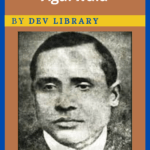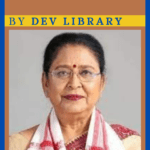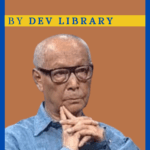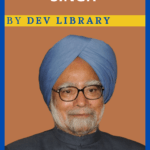Rajanikanta Bordoloi is a unique person in writing Assamese novels. Rajanikanta Bordoloi’s contribution to Assamese language literature is undeniable. Bordoloi has realistically reflected the history of Assam, political life, social and religious life, ancient customs of Assam, love-making and the natural environment of Assam through writing novels. Some critics called him Walter Scott of Assam. He was President of the Assam Sahitya Sabha in 1925 which was held at Nagaon.

Biography of Rajanikanta Bordoloi
| Name | Rajanikanta Bordoloi[1] |
| Pen Name | Upanyash Samrat (King of novel) |
| Date of Birth | 24 November 1867 |
| Place of Birth | Guwahati, Assam |
| Father’s Name | Narakanta Bordoloi |
| Education | 1. Guwahati Government High School 2. Metropolitan College, Kolkata 3. City College, Kolkata |
| Death | March 25, 1940 |
Early Life of Rajanikanta Bordoloi
Novelist Rajanikanta Bordoloi was born on November 24, 1867 in Guwahati. Rajanikanta Bordoloi’s ancestor was from Kannauj. They later moved to Dihing in Assam. His father’s name was Narakanta Bordoloi.
Importantly, like other children, childhood was sweet but full of challenges was that of Rajanikanta Bordoloi. At the age of nine, he lost his father Narakanta Bordoloi. Bordoloi later started his primary education in North Guwahati with the supervision of his mother. Bordoloi joined Metropolitan College in Kolkata after passing the entrance examination from Guwahati Government High School in 1885 and passed the FA examination in 1887 from Metropolitan College. Importantly Bordoloi also received a scholarship. He joined CT College in Kolkata for graduation after passing the FA exam and graduated with a reputation in 1889.
Also Read : Biography of Padmanath Gohain Baruah
Career and his works
Rajanikanta Bordoloi started his career as a clerk at the district collector’s office in Guwahati in 1890 after completing his formal education. Bordoloi, who also once served as assistant under Gate Sahab, was promoted to sub deputy collector in 1891 and joined Lakhimpur. Bordoloi also served as the temporary deputy commissioner of Nagaon in 1909. Bordoloi, who spent his career in various places like Barpeta, Bijni, Howli, Sarbhog, retired from his job in 1918.
Bordoloi, who had been preaching literature since his student days, was a poet, storyteller, manager, playwright, author of satire, textbook writer, author and editor of religious writing. Bordoloi, who has made an outstanding contribution to the Assamese literary world along with his speech as president of Assam Sahitya Sabha, in various meeting committees are invaluable assets of Assamese literature. Importantly, the articles written by Bordoloi were also of different subjects. He wrote various articles on various subjects such as biography, educational, travel, translation, archaeology, etc. Bordoloi is known as the novel emperor in Assamese literature. Rajanikanta Bordoloi’s place in Assamese novel literature is like Sir Walter Scott in English novel literature and Bankim Chandra Chatterjee in Bengali novel literature.
The notable articles of Bordoloi, who wrote thoughtful articles of different tastes, are: Differences between conscious animals and plants, Raktahari Padap, Manipuri nation, The old theory of the Kingdom of Sadiya, Aithan Darshan of Dibrugarh, Dev Damodar and Hinduism, Shri Sri Bhattadeva, Mahapurush Shri Sri Shankardev, Nardev Satradhikar of Dakshinpat Satra etc. are notable article written by Rajanikanta Bordoloi. Articles like Jonaki, Banhi, Awahan, Milan etc. were published on the pages of various magazines. Moreover, at the request of Gate Sahab, Bordoloi, ‘Religion of the Miris’, ‘The potteries of Assam’, At the request of Simon Sahab, ‘The weaving industry of Assam‘, and at the request of Gordon Sahab, ‘The Chutias of Assam‘ Rajanikanta Bordoloi had prepared notes on various topics like this. In 1897 Rajanikanta Bordoloi wrote ‘Gyan Hopun‘ to fill the shortage of textbooks. Bordoloi also composed plays. Along with Kankalal Baruah and Gopal Krishna Dey, in 1890 he wrote a play called ‘Savitri Satyavan.‘ Bordoloi, who had experienced visiting various shrines in India, wrote an article called “Puri Yatra” in 1914.
Bordoloi has also contributed to Assamese literature by writing articles on Psychology related issues. Rajanikanta Bordoloi also wrote stories even though it was low in numbers. On the other hand, the only poem written by Bordoloi is- “Maanor Proti Aakromonor Geet.” His poem is incorporated in the poetry talent edited by Dimbeswar Neog.
Apart from stories, essays, poems, Bordoloi wrote various articles on social reform through various funny works under the pseudonym Bholai Sharma. Some of them are: Moi Swadhin Ne, Atmavinodak Theatre Team, Cencus-Piyol, Shri Bholai Sharma Bhavh Prawanata etc.
Within the literary work of Bordoloi his novels are an outstanding contribution to the Assamese literary world. He was keen to write novels since his student days. Each and every novel of Bordoloi was brilliant in its own glory. He wrote novels with history as the basis. He was inspired by English writer Sir Walter Scott and Bengali writer Bankim Chandra Chatterjee for writing novels. Bordoloi has written a total of nine novels. “Miri Jiyori” published in 1894 is Rajanikanta Bordoloi’s first novel. It is Bordoloi’s first novel based on tribal life and is his only social novel.
Manomoti (1900), Rangilee (1925), Nirmal Bhakat (1927), Tamreswar Mandir (1926), Rahdoi Ligiri (1930), These novels are written by Rajanikanta Bordoloi against the backdrop of Mann’s attack. Other novel are Danduadrah, published in 1909, is Another of his novels, Radha Rukmini’s Ron novel published in 1925, was written against the backdrop of the Moamaria rebellion. Bordoloi’s 1932 novel Thamba-Thoibir Sadhu was written on the basis of a sadhu prevalent in Manipur.
Bordoloi’s novels reflects Assam’s love, love towards caste tribes, sympathy for human society. The language of Bordoloi’s novel composition is simple., Pictorial and natural. Importantly, he was a person conscious of the dignity of women in the society. Which is why he has revealed through novels that women are constantly being suppressed in society. Character creation is one of the main features of Bordoloi’s novel. He has excelled in creating female characters. His novels are based on heroine as a chief.
The novel by Bordoloi is unique as the novel of Assamese literature, it also reflects the influence of Gunabhiram Barua’s Assam history and Sir Edward Gait’s ‘A History of Assam’, as well as the influence of old books.
Although Bordoloi’s novel showed the influence of various people, he decorated the soil of Assam with social and political environment of Assam. His novels reflected the Assamese invasion of Maan’s, the courage of the Assamese nation, the concept of patriotism, the past, the image of Assam facing setbacks in the political storm.
Conclusion
Importantly, while studying in Kolkata Bordoloi was briefly an active member of the Assamese Language Improvement Sadhini Sabha. He also decorated the president’s seat of the eighth session of the Assam Sahitya Sabha held in Nagaon. It may be recalled that the greeting he gave as the President of Assam Sahitya Sabha was an invaluable asset to Assamese literature. In addition, the speeches made by Bordoloi at the Miri Sanmelan, Assam Chutiya Sanmelan also reflect the nature of caste, social culture. It may be recalled that Bordoloi edited and published a magazine called “Assam Pradipika” in 1925.
It may be recalled that Bordoloi was an accomplished actor. He played a busy career in a lifetime. On March 25, 1940, novelist Rajanikanta Bordoloi, a sincere seeker of Assamese language literature, died at the age of 73.
FAQ
1. When and where was Rajanikanta Bordoloi born?
Ans: Rajanikanta Bordoloi was born on 24th November 1867 at Guwahati, Assam.
2. Who is Rajanikanta Bordoloi?
Ans: Rajanikanta Bordoloi was a noted writer, journalist and tea planter from Assam, India.
3. What is the first novel by Rajanikanta Bordoloi?
Ans: The first novel by Rajanikanta Bordoloi was “Miri Jiyori.”
4. What is the novel Miri Jiyori is based on?
Ans: “Miri Jiyori” is an Assamese novel written by Rajanikanta Bordoloi. The book unveils some important aspects of then contemporary Missing society and a series of their customs and traditions.
5. Who is considered as the emperor of Assamese novel?
Ans: Rajanikanta Bordoloi.
6. Who is known as the Walter Scott of Assam?
Ans: Rajanikanta Bordoloi.
7. Name some of the novels written by Rajanikanta Bordoloi?
Ans: Some of the novels written by Rajanikanta Bordoloi are – Manomoti (1900), Rangilee (1925), Nirmal Bhakat (1927), Tamreswar Mandir (1926), Rahdoi Ligiri (1930), Danduadrah (1909) etc.
8. When did Rajanikanta Bordoloi died?
Ans: Rajanikanta Bordoloi died on March 25, 1940 at the age of 73.

Hi, I’m Dev Kirtonia, Founder & CEO of Dev Library. A website that provides all SCERT, NCERT 3 to 12, and BA, B.com, B.Sc, and Computer Science with Post Graduate Notes & Suggestions, Novel, eBooks, Biography, Quotes, Study Materials, and more.








